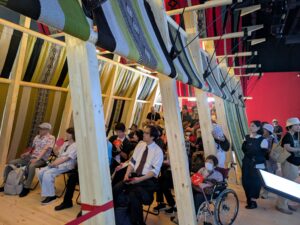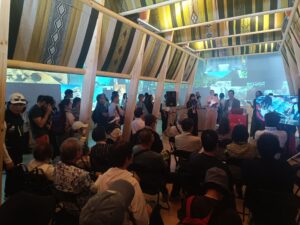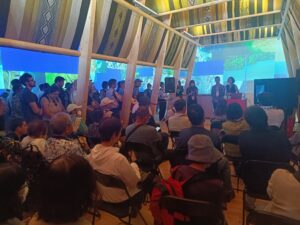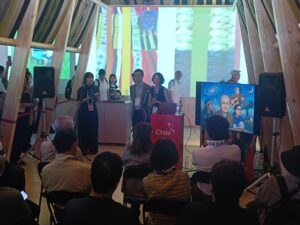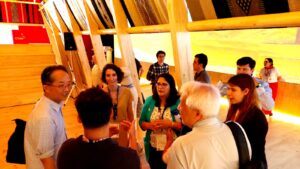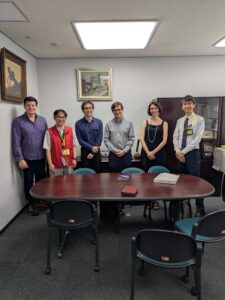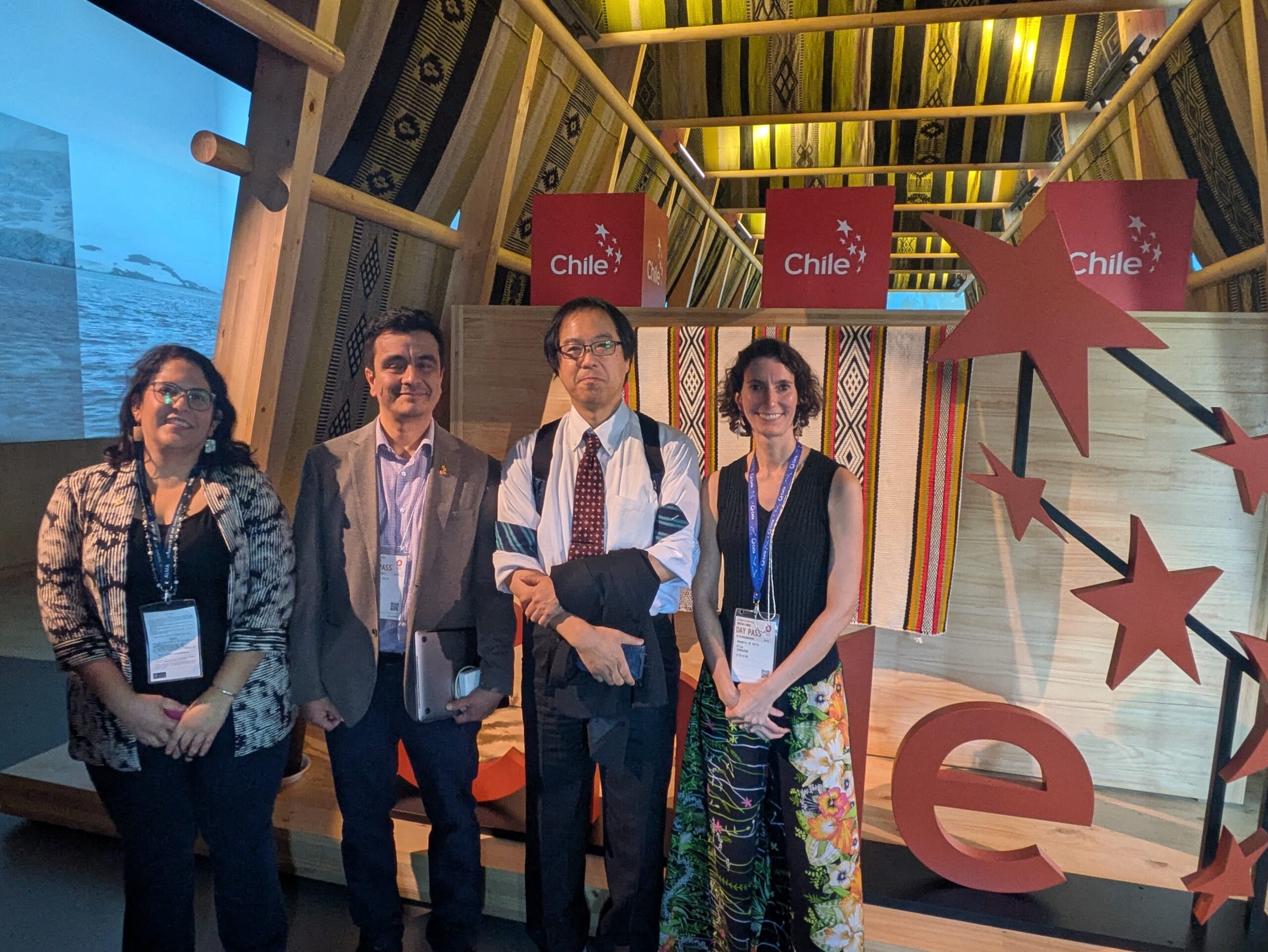
CATA projected Chilean astronomy to the world at Expo Osaka 2025
The Center for Astrophysics and Related Technologies (CATA) was present at one of the world's most important events on innovation and sustainability for the future.
Between May 19 and 25, 2025, Chile displayed all its scientific and creative potential during its second week in one of the highlights of the National Pavilion at the Osaka World Expo. Under the slogan “Infinite Innovation: Exploring the limits of the universe and creativity”, the country positioned itself as a global player in science, technology and art, with a special focus on astronomy and the transfer of knowledge to other industries.
During this thematic week, Chile presented its proposal through exhibitions, talks, workshops and immersive experiences, highlighting its world leadership in astronomical observation and its ability to connect scientific knowledge with technological development and cultural expression.
One of its exponents was the Center for Astrophysics and Related Technologies (CATA), which was invited by ProChile to co-organize the event with the Department of Astronomy of the University of Chile. CATA’s participation was key to articulate an approach that, beyond research, would value the impact of astronomy on national innovation and technology transfer.
“ProChile invited us to participate in a week whose themes would cover astronomy and artistic creations. As they knew that CATA is dedicated to astronomical themes, they proposed that we participate and co-organize the week,” explained Elise Servajean, General Manager of the Center.
The astronomer also emphasized that this participation made it possible to make visible not only the astronomical knowledge, but also the technological development promoted by the Center: “For us it is key to have this space and to be able to show the world that we are doing something that also provides an extra added value to the development of astronomy in the country”.
Astronomy as a driver of development
Expo Osaka 2025 is an international exhibition open to the public, where countries and organizations from around the world present their progress in areas such as sustainability, technology, health and culture for six months. For our country, the “Infinite Innovation Week” was a strategic showcase to position us as a regional leader in innovation, technology transfer, scientific dissemination and advanced research.
In this context, astronomy played a central role. Chile not only has the most privileged skies on the planet for astronomical observation, but has also developed scientific and technological capabilities that today are projected to other productive sectors.
“Astronomy is one of the doors we have to other countries, where we are world leaders and with a very strong astronomical community. Having a natural competitive advantage such as Chile’s skies, from which frontier research is generated and having positive externalities that are developed locally, such as technology transfer, is something that finally aligns perfectly with the theme of the expo. And also, if we cross this with art and culture, it is finally a transversal innovation”, added Servajean.
The CATA manager also valued the opportunity to connect with Asian and international institutions to establish strategic alliances: “Being suppliers of astronomical instrumentation opens the door for us to make technology transfer and thus help local industries – and hopefully in the future international ones – to solve their problems with technological developments. It would be very interesting for institutions in Japan and other countries to see what strategies we use to successfully achieve technology transfer from basic research, and that we can collaborate to strengthen it and reach new markets”.
CATA’s participation in Osaka 2025
During the week of May 19-25, various representatives of CATA participated actively in the Chilean pavilion’s programming, contributing with specialized presentations, educational workshops and reflections on the impact of astronomical knowledge and innovation.
Elise Servajean, General Manager of CATA, was a speaker at the inaugural conference entitled “Astronomy and Society”, held on Tuesday, May 20, together with Walter Max-Moerbeck, Research Associate at the Center and member of the Department of Astronomy of the University of Chile. In addition, the manager presented at the end of that week her talk “Beyond the telescope. Chilean innovation with global impact”, where she explained how the Center has developed technology transfer through astronomical instrumentation, accompanied by Franco Curotto, CATA’s Laboratory Manager.
Laura Perez, Principal Investigator of CATA and academic of the University of Chile, presented on Thursday 22 her talk “Cosmic Enigmas: Deciphering the origin of the planets” sharing with the public key findings on the origin of planetary systems. The astronomer also led the panel “Astrophysics from Chile”, together with Walter Max-Moerbeck.
On the same day, Santiago Prat, Innovation Manager of the institution, gave a talk on “Innovation: Astronomical Instrumentation and Technology Transfer”, accompanied by Elise Servajean and Franco Curotto. This presentation focused on the same topic of how the knowledge generated from Chilean astronomy is being transferred to other industries and society to offer high impact solutions.
Finally, José Utreras, in charge of Science Outreach Content at the Center, presented his talk “History of Astronomy in Chile” and conducted a didactic workshop on Stellar Evolution together with Andrea Mejías, Outreach Coordinator of the Astronomy Department of the University of Chile.
Linkage with Japanese academia
In parallel to the World Expo Osaka 2025, the Center for Astrophysics and Related Technologies (CATA) generated contact with Japanese organizations dedicated to science and innovation. Among these, the Osaka Metropolitan University, where our team visited the astronomical instrumentation laboratories of the institution and learned about the projects under development. At the same time, our representatives visited the Osaka Science Museum, where they were received by the director and curator of the institution, in order to share experiences and seek spaces for collaboration on outreach issues.
Likewise, contact was made with different institutions, both from Japan and other countries, with which CATA will deepen collaboration topics such as technology transfer, women in STEM and applied research.
This diversity of activities and approaches allowed the Japanese and international public to learn about the Center’s work, not only from frontier research, but also from its commitment to dissemination, innovation and technological development.
CATA’s participation in Expo Osaka 2025 was a unique opportunity to show the world that Chile not only observes the sky, but also transforms that knowledge into concrete innovation. From technology transfer to artistic expression, astronomy was the perfect bridge to represent a country that looks to the future without losing sight of its identity.
Recent news
-
 Publicado el: 15/11/2025Leonids meteor shower 2025: What are they, when will they be visible from Chile, and what can we learn from them?
Publicado el: 15/11/2025Leonids meteor shower 2025: What are they, when will they be visible from Chile, and what can we learn from them? -
 Publicado el: 13/11/2025CATA researcher strengthens international ties during visit to the Center for Astrobiology in Madrid
Publicado el: 13/11/2025CATA researcher strengthens international ties during visit to the Center for Astrobiology in Madrid -
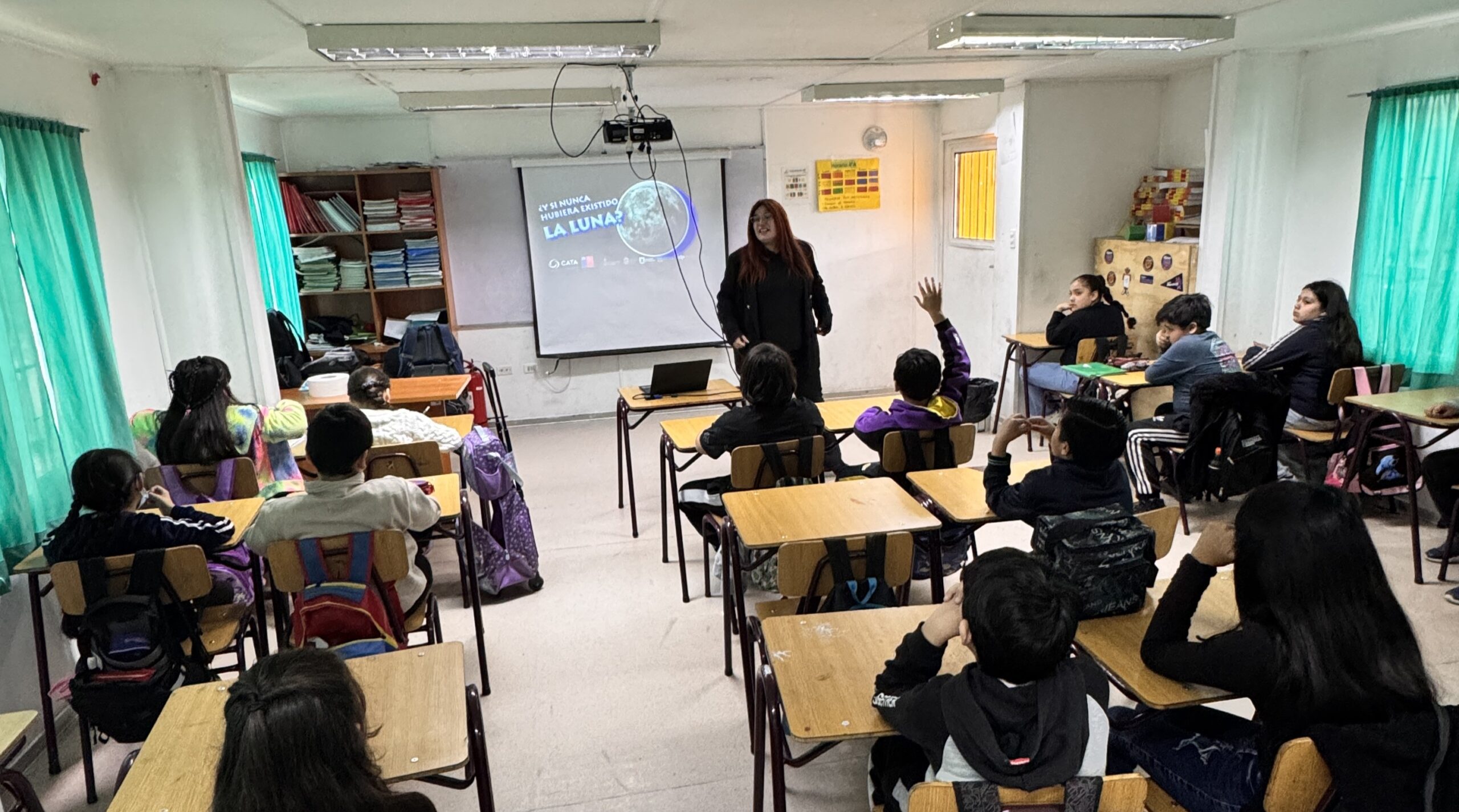 Publicado el: 12/11/2025Fourth graders learned what would happen if the Moon did not exist
Publicado el: 12/11/2025Fourth graders learned what would happen if the Moon did not exist -
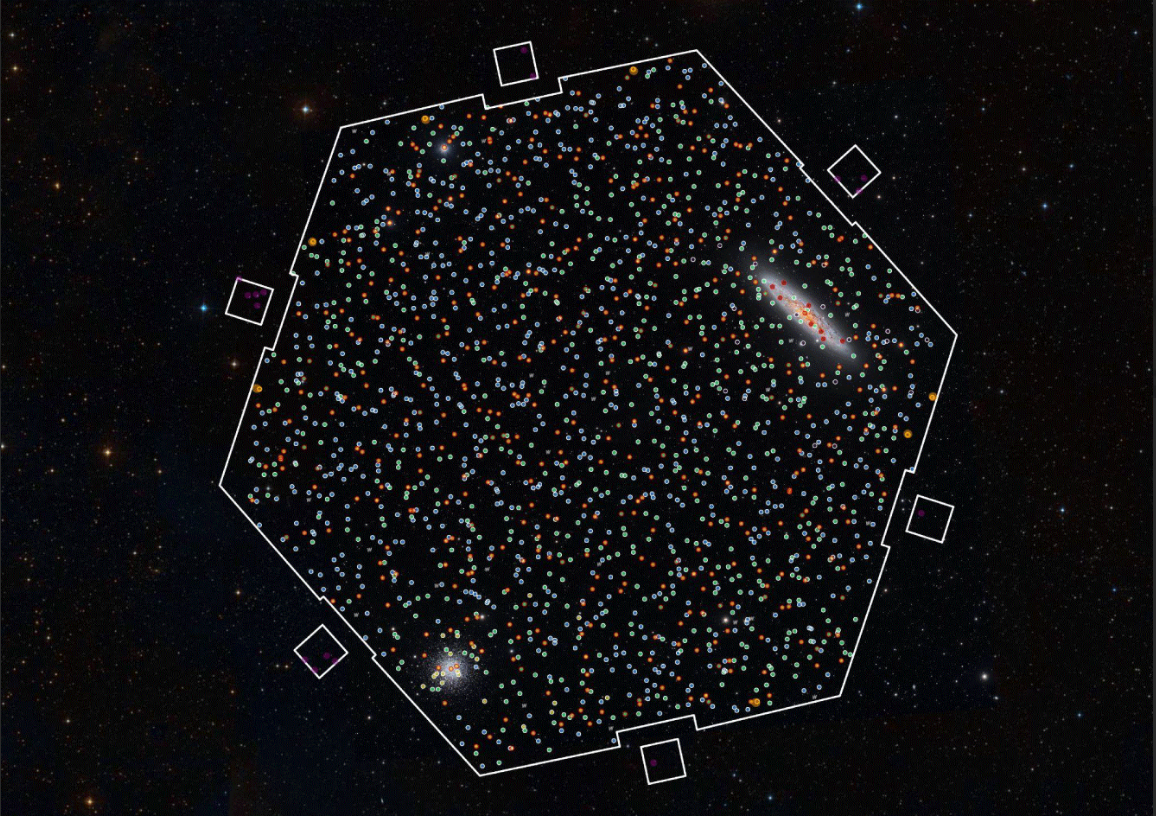 Publicado el: 29/10/2025Chile celebrates the first light of 4MOST: two major projects involving CATA astronomers begin to explore the Universe
Publicado el: 29/10/2025Chile celebrates the first light of 4MOST: two major projects involving CATA astronomers begin to explore the Universe -
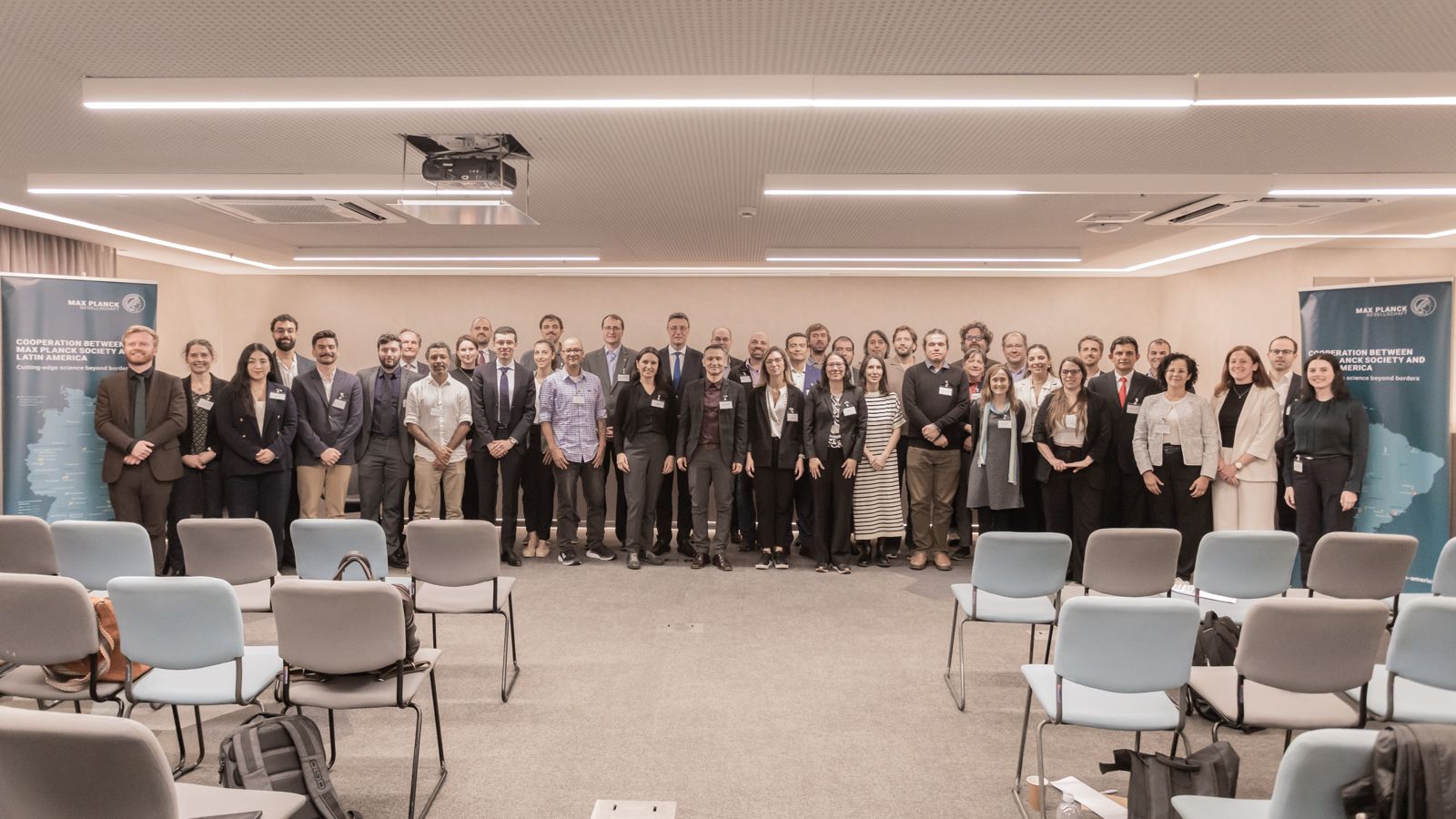 Publicado el: 24/10/2025CATA researcher participated in Max Planck regional meeting in Brazil
Publicado el: 24/10/2025CATA researcher participated in Max Planck regional meeting in Brazil
Categories list
- Acknowledgments 21
- Astrobiology 6
- AstroCluster 1
- Black holes 18
- Corporativo 57
- Cosmology 5
- Descubrimientos 22
- Disclosure 71
- Exoplanets 13
- Extension 4
- Galaxies 21
- Galaxies formation 5
- Inter y Transdisciplina 4
- Local Universe 16
- Publications 6
- Sin categorizar 34
- Solar System 21
- Stellar formation 8
- Technology 14
- Technology Transfer 16
